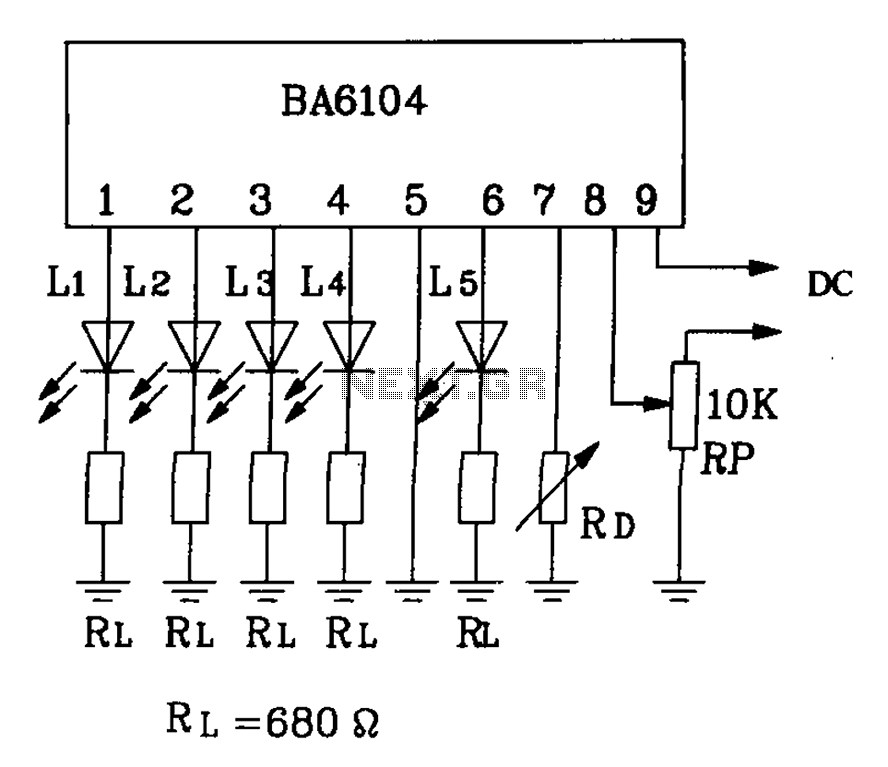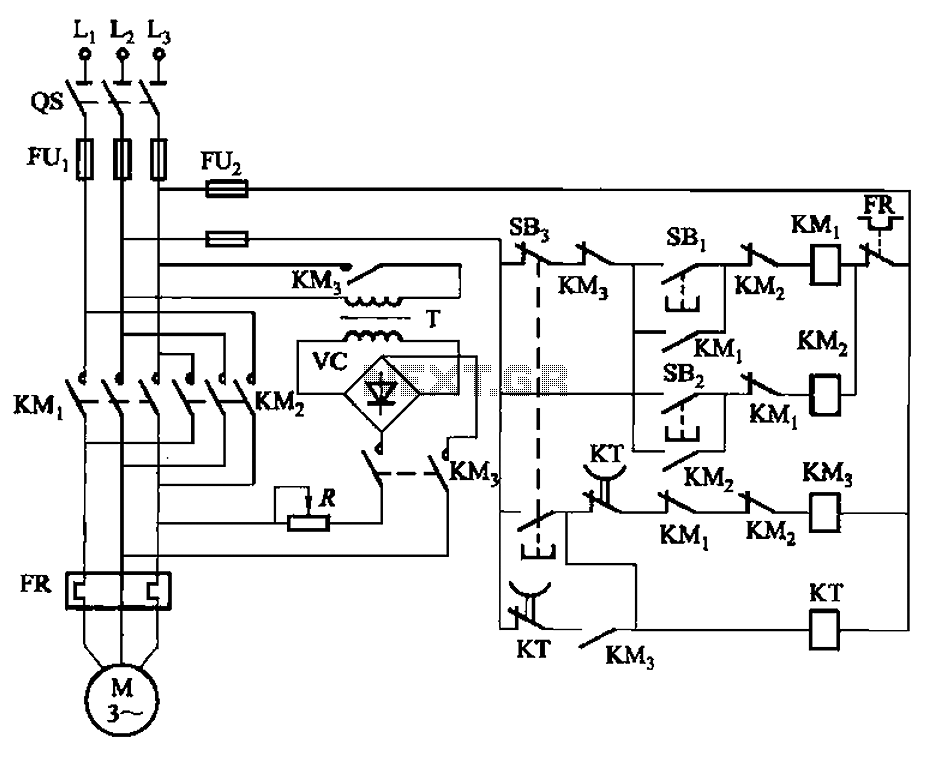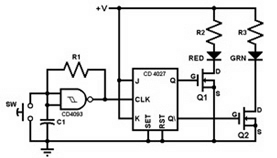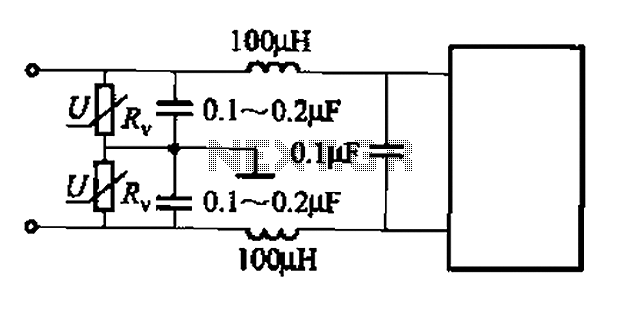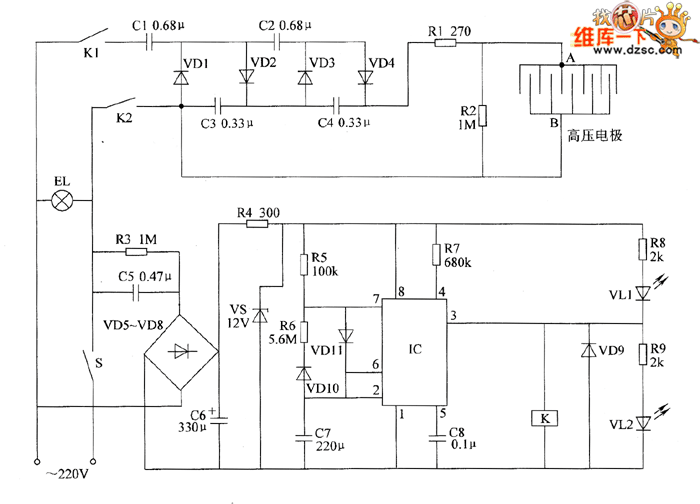
Stud Sensor Automatic circuit

This device is a highly effective capacitive sensor. In North America, it is primarily utilized for detecting wooden beams behind drywall or plaster. This model is preferred over newer designs due to its reliability, as it does not frequently malfunction when employed in non-standard applications.
The capacitive sensor operates by measuring the change in capacitance caused by the presence of a conductive or dielectric material. When the sensor is brought close to a wooden beam, the capacitance changes, allowing the device to detect the beam's location. This sensor typically consists of a sensing plate, a microcontroller for processing the signals, and an output interface, which may include visual indicators such as LEDs or audio alerts to inform the user of detection.
The design of this capacitive sensor is optimized for precision and reliability. It features a robust circuit configuration that minimizes false readings and enhances performance in various conditions. The sensor's sensitivity can often be adjusted to accommodate different materials and thicknesses of drywall or plaster, making it versatile for various applications in construction and renovation.
Power supply requirements for this capacitive sensor are generally low, allowing it to be powered by standard batteries or through a USB connection. The compact form factor ensures ease of handling and storage, making it an essential tool for professionals and DIY enthusiasts alike. Overall, this capacitive sensor stands out for its dependable operation and user-friendly design, making it a valuable asset in detecting hidden structures behind walls.This thing is a very nifty capacitive sensor. For you europeans, this little gem is used in north america mostly for detecting wooden beams behind drywall or plaster. I`ll take one of these over the new design any day, because these ones don`t error out every time you try to use them in a non-standard way.
🔗 External reference
The capacitive sensor operates by measuring the change in capacitance caused by the presence of a conductive or dielectric material. When the sensor is brought close to a wooden beam, the capacitance changes, allowing the device to detect the beam's location. This sensor typically consists of a sensing plate, a microcontroller for processing the signals, and an output interface, which may include visual indicators such as LEDs or audio alerts to inform the user of detection.
The design of this capacitive sensor is optimized for precision and reliability. It features a robust circuit configuration that minimizes false readings and enhances performance in various conditions. The sensor's sensitivity can often be adjusted to accommodate different materials and thicknesses of drywall or plaster, making it versatile for various applications in construction and renovation.
Power supply requirements for this capacitive sensor are generally low, allowing it to be powered by standard batteries or through a USB connection. The compact form factor ensures ease of handling and storage, making it an essential tool for professionals and DIY enthusiasts alike. Overall, this capacitive sensor stands out for its dependable operation and user-friendly design, making it a valuable asset in detecting hidden structures behind walls.This thing is a very nifty capacitive sensor. For you europeans, this little gem is used in north america mostly for detecting wooden beams behind drywall or plaster. I`ll take one of these over the new design any day, because these ones don`t error out every time you try to use them in a non-standard way.
🔗 External reference
